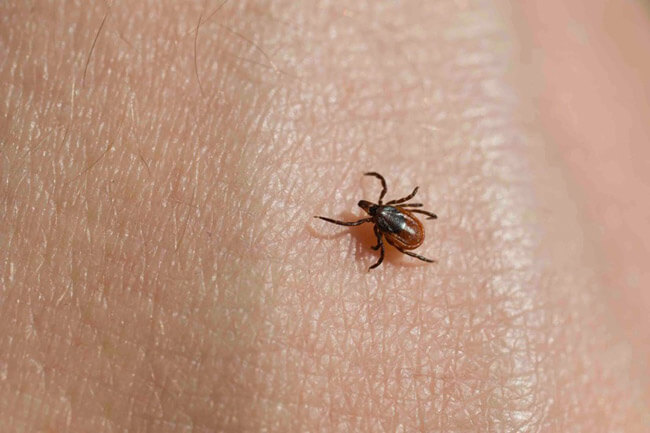
Connecticut's tick population appears to be rising this spring, bringing increased risks for Lyme Disease and other tick-borne pathogens, a top state expert warned Thursday.
Tests by scientists at the Connecticut Agricultural Experiment Station have also found a higher-than-average rate of the Lyme Disease spirochetes in ticks tested so far this year, according to the station's director, Dr. Theodore Andreadis. But experiment station scientists are struggling to keep up with the volume of ticks being sent in from around the state for testing because of a state hiring freeze. "We're in a bit of a bind," Andreadis said. "We're in desperate need of [full-time] technical assistance." He said a technician who was working on tick testing left for another job and that the state's budget cutbacks has prevented the station from filling that now-vacant position. Andreadis said the surge in the population of deer ticks, which can transmit Lyme Disease and other illnesses to humans, appears to be the result of recent mild winters and a "higher over-winter survival" of the insects. "We suspect climate change," Andreadis said. "Right now we don't have any other explanation." In addition to testing for Lyme Disease, the station's program can now check for tick-transmitted afflictions that include babesiosis, and granulocytic anaplasmosis, which are serious but far less common. The most serious threat to Connecticut citizens comes from ticks carrying Lyme Disease, according to experts. Lyme Disease, which was first identified in and named for Lyme, Connecticut, is now the most common vector-borne disease in the U.S. A vector-borne disease is one transmitted to humans by insects or other animals. "Although we have yet to reach peak tick activity this spring, adult deer ticks… are already active and biting residents in greater numbers," Andreadis said. He urged Connecticut residents who go walking or hiking in wooded and brushy areas to check themselves for ticks immediately after returning. He also warned that most insect repellants "aren't very effective against ticks" and that the only way to spot tiny deer ticks is a close examination of the skin. Showering or bathing won't rid a person of a tick if one is attached to the skin, he added. Andreadis said people should take particular care to check behind their knees, arm pits and the base of their scalps – spots where ticks can often go unnoticed. The experiment station has so far this year received more than 450 ticks for testing. Officials said nearly 38 percent of those ticks tested positive for Lyme Disease. Over the past decade, the average Lyme Disease infection rate for ticks tested at the station was 27 percent. Ticks tested thus far in 2017, ten percent were positive for the causative agent for babesiosis, and five percent were positive for the agent causing granulocytic anaplasmosis, according to station officials. In 2015, Connecticut public health officials recorded 2,553 reported Lyme Disease cases, 286 cases of babesiosis, and 120 cases of granulocytic anaplasmosis in this state. Another tick-borne virus, called the Powassan virus, has also recently been discovered in Connecticut. State health officials said this virus strain, which is related to West Nile virus, is rare but potentially fatal. But experts said only 50 cases of this disease have been identified in the U.S. since 2004. In Connecticut, this virus was detected in ticks from Bridgeport and Branford. Read the entire article on The Hartford Courant.






-2.jpg)